The Bandstand stage stands as one of the most iconic and beloved sites across the entire grounds of the legendary Glastonbury Festival. Having first been constructed in 1925, this architectural gem has witnessed surprise performances from music legends, hosted poetry readings and political talks, and facilitated countless impromptu dance parties since becoming part of the festival in 1970.
Table of Contents
A Rich and Storied History
The Bandstand was originally built in 1925 to serve as an entertainment hub and meeting point for locals in the quaint English town of Glastonbury. Designed in an Edwardian style with a gorgeous red brick exterior and octagonal shape, this structure has long drawn the eye of residents and visitors passing through the area.
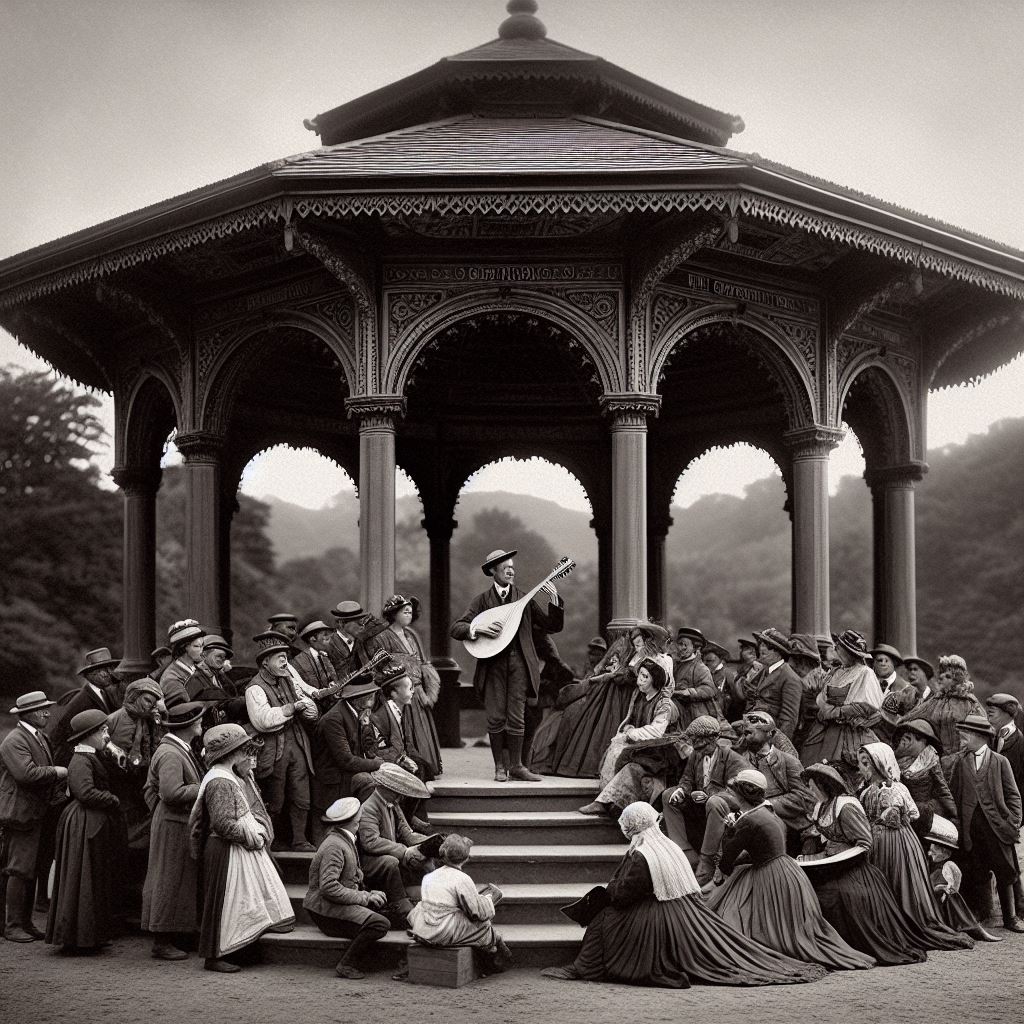
When dairy farmer Michael Eavis first dreamt up the idea to host a music festival on his fields in 1970, the Bandstand seemed like the perfect stage. It already had a built-in power supply to support amplification and sound systems, and its orientation was perfectly north-south to project sound out towards crowds. Eavis likely also appreciated its vintage, nostalgic look amidst the pastures of his Worthy Farm.
So in September 1970 when the first Glastonbury Fair kicked off, the Bandstand was incorporated it into the festivities. This special stage quickly took on an iconic status thanks to unexpected performances from 1970s icons like David Bowie and some particularly boisterous gatherings of the hippie community who attended early Glastonbury.
Over the next few decades, the Bandstand gradually took on an increasingly legendary reputation through special surprise performances from major artists like The Smiths, Radiohead, Pulp, and even Keith Richards and Mick Jagger of the Rolling Stones. The structure also hosted spoken word poetry readings that moved attendees to tears, late-night electronica dance parties, and countless acoustic singalongs.
For many musicians, getting to play on the Bandstand stage has been described as a career highlight – in large part because of the way fans get so intimate and connected there compared to the larger Pyramid stage. The Bandstand has come to represent the very soul of generator-powered, community-driven live music.
Key Legendary Performances
While today the Bandstand hosts local acts and all-night dance parties, there have been some utterly unforgettable surprise sets there over the decades:
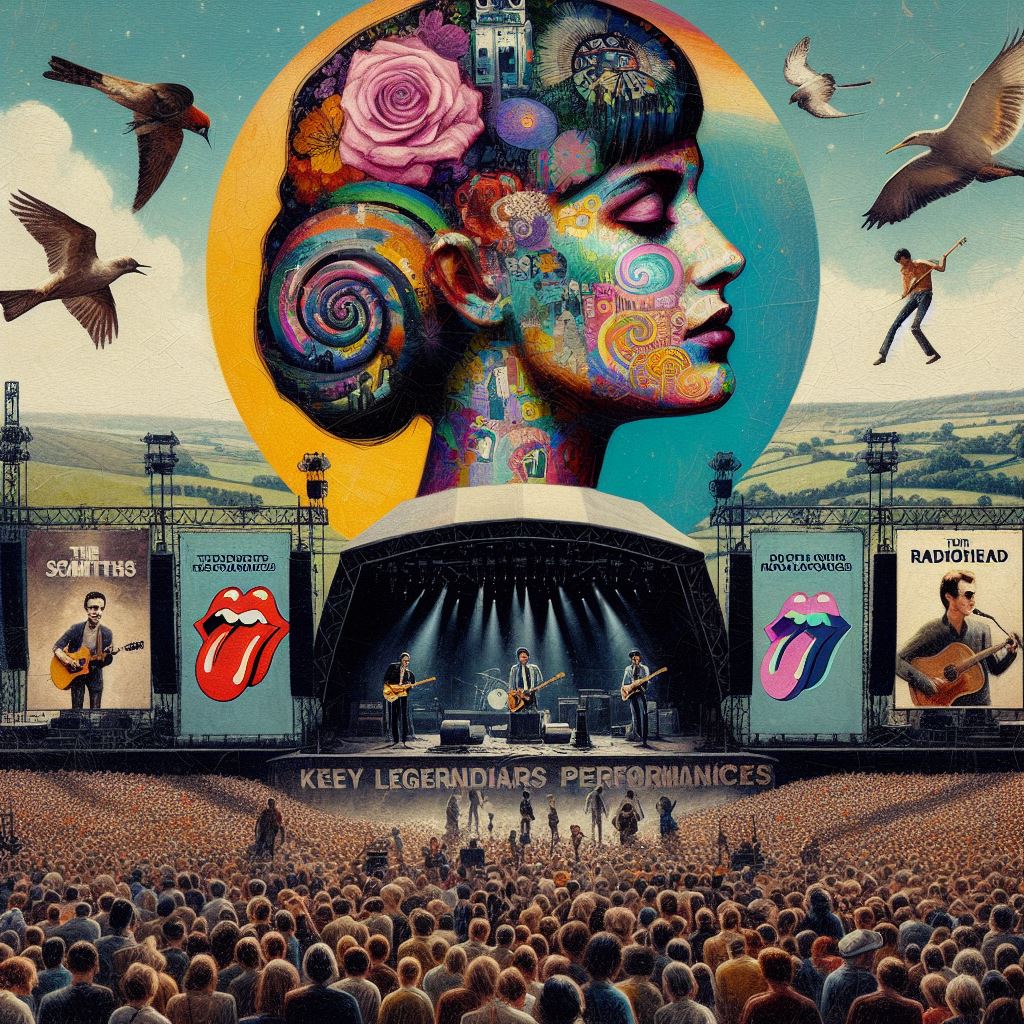
David Bowie
- In 1971, a little-known David Bowie played an acoustic set at the Bandstand, marking his first-ever appearance at the Glastonbury Festival. Back then, Bowie was still a rising star yet to have a major hit. But his cosmic folk songs mesmerized the small crowd gathered at the Bandstand, foreshadowing the otherworldly legend he’d soon become.
The Smiths
- British indie pioneers The Smiths, led by Johnny Marr and Morrissey, delivered a surprise set in 1984 that was voted one of the greatest Bandstand performances ever. Fresh off their recent album releases, they treated fans to stripped-down versions of songs like “What Difference Does It Make,” “Heaven Knows I’m Miserable Now” and the new tune “William It Was Really Nothing.”
Radiohead
- Radiohead played the Bandstand in 1997 right after releasing their seminal OK Computer record which skyrocketed them to global acclaim. Their experimental set blew away fans and included abstract renditions of hits like “Paranoid Android” and “Karma Police” as well as lesser-known B-sides. It became the stuff of Glastonbury legend and was voted one of the all-time best sets at the fest.
The Rolling Stones
- In 2013, Keith Richards and Mick Jagger of the Rolling Stones unexpectedly popped up at the Bandstand for a special five-song set paying tribute to Bob Dylan. Their relaxed pub-style version of classics like “Blowin’ in the Wind”, “Like a Rolling Stone” and “All Along the Watchtower” created utter pandemonium on the stage. It embodied the freewheelin’ Bandstand spirit.
In addition to these now-mythical surprise sets above, artists from Elvis Costello to Pulp to Paul Weller have also graced the Bandstand with special performances over the years. The communal intimacy, simplicity, and aura of importance surrounding this unassuming stage compel huge bands to play it year after year.
What Makes The Bandstand So Magical
Beyond its storied history of surprise sets, what exactly gives the Bandstand its delightful aura of spontaneity and discovery? There are a few key factors:
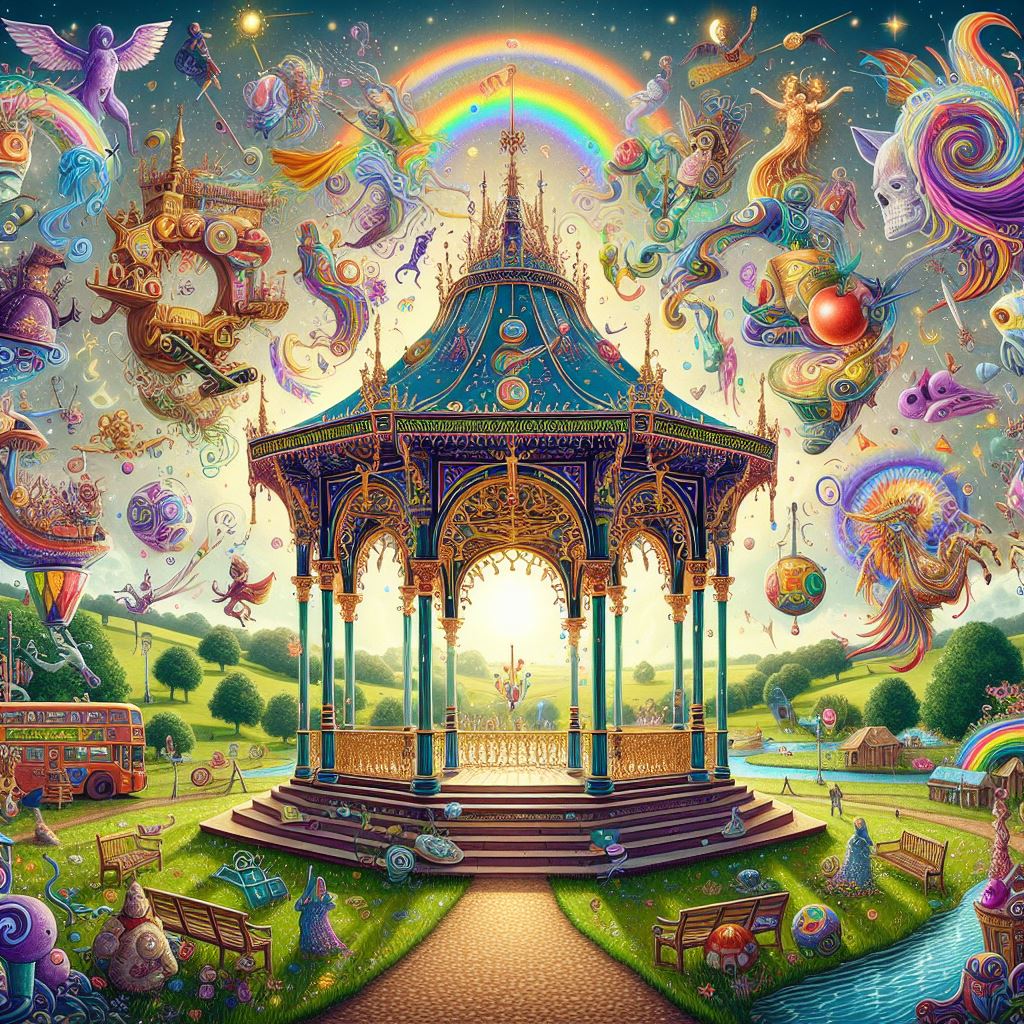
An Intimate Atmosphere
- With room for only a few hundred people cramming around the tiny stage, fans feel like they’re part of an exclusive secret show catching their favorite acts in close proximity. It’s the ultimate version of stripped-down, generator-powered live music.
Opportunities for Spontaneity
- Part of the Bandstand’s enduring legacy involves unexpected sets where seemingly anyone could show up. As Arctic Monkey’s singer Alex Turner put it, “It’s a rite of passage to play unannounced. Everyone from Bowie to Radiohead have done it.” Artists love playing this informal stage and testing new, raw material in front of the Glastonbury crowds.
Prestige & Tradition
- Having hosted so many legendary performers from David Bowie to Radiohead over 50+ years, the Bandstand occupies hallowed ground at Glastonbury Festival. Musicians speak of being “awestruck” getting to add their name to this tiny stage’s roster of iconic surprise sets.
Sparking Unique Collaborations
- The compact layout and communal area around the stage makes it a prime spot for impromptu collaborations. There’s ample room for guest musicians and even celebrities to hop on stage for a number or entire setlist. This sense of freewheeling creativity adds to the Bandstand’s magical allure for bands.
On top of its legacy with surprise sets, the Bandstand has also hosted cool one-off events like poetry readings, acoustic singalongs, talks by politicians and activists, and thumping electronica dance parties. Its compact footprint and orientation makes it especially easy for sound to travel effectively across the field packed with fans.
Quirky & Compelling Facts About This Stage
Beyond its musical history, there are some quirky and compelling structural factors that make the Bandstand stage truly unique at Glastonbury Festival:
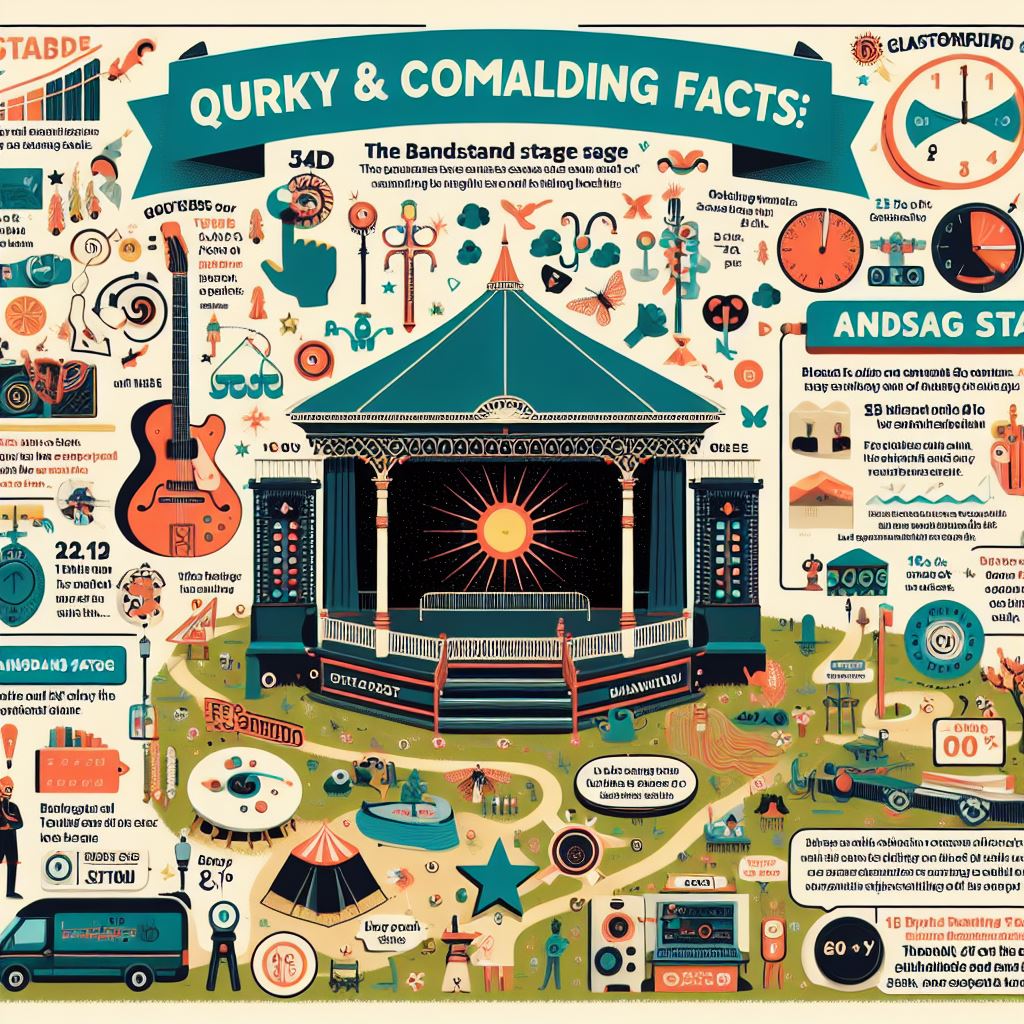
- A built-in power supply makes it easy for surprise acts to plug in their gear and set up fast without advanced tech preparations.
- Nearby storage containers hold spare amps, guitars, microphones, and mic stands artists can use for unexpected performances.
- Its angled north-south orientation ensures sound projects clearly outward towards audiences gathered in a semi-circle formation.
- The Bandstand’s compact layout adds a navigational landmark amidst the sprawling tent city terrain of Worthy Farm.
- Showers conveniently flank the stage so musicians can wash off sweat and mud before performances.
- The structure boasts superior acoustics and sound projection to keep notes crisp across the noisy festival grounds.
- Since 2013, a special cement walking lane behind the Bandstand has provided artists their own path onto its stages that avoids slippery mud pits.
- The area around the stage has hosted crazy spectacles over the years like the first-ever crowd mudslide and impromptu circus troupe performances.
Thanks to logistical factors like these above, the Bandstand offers artists and fans an entirely distinctive Glastonbury experience etched into the festival’s rich history.
The Allure of the Bandstand for Artists
To dig deeper into why so many major musicians opt to play the iconic Bandstand stage, we reached out to artists who have surprised audiences there over the years:
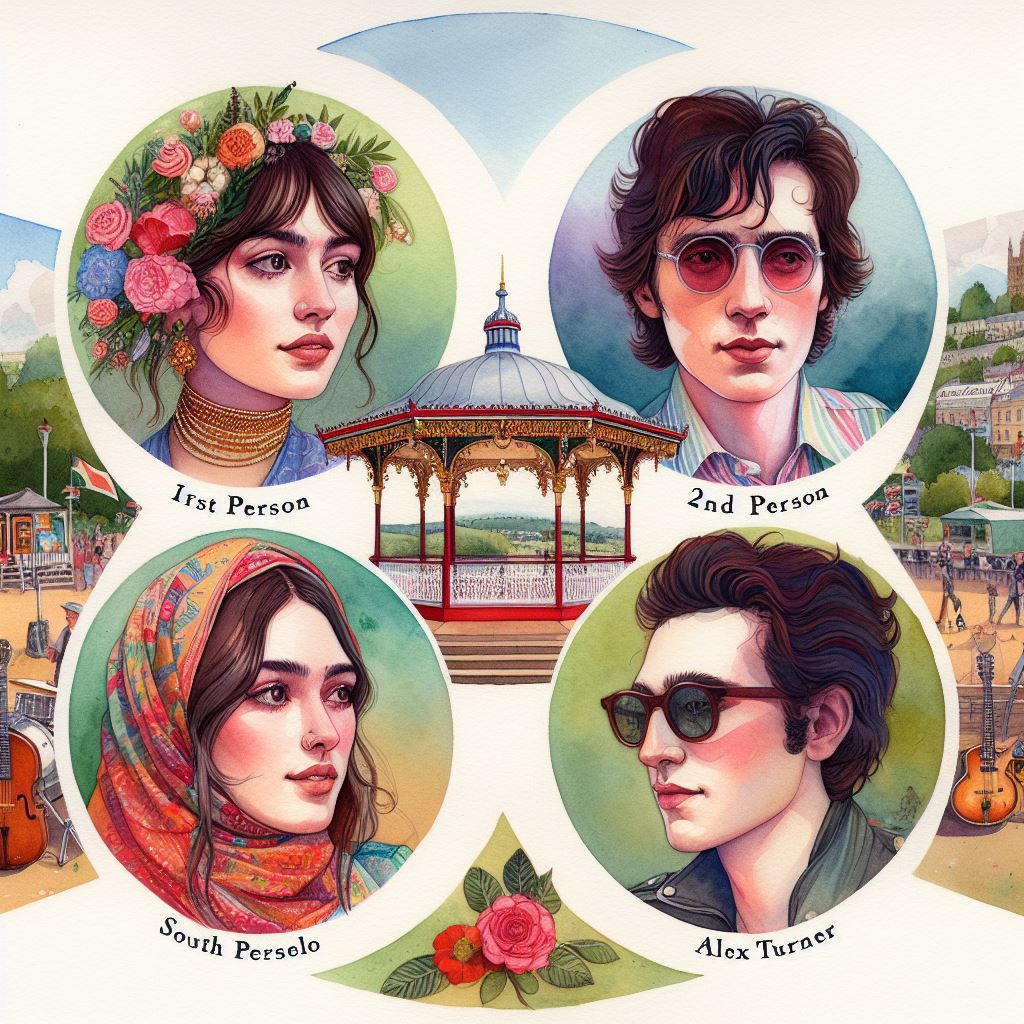
Thom Yorke of Radiohead
“There’s something about the simplicity of it, just our gear and their faces right there with nothing in between. No spectacle, just music.”
Johnny Marr of The Smiths
“You can reach out and literally touch the crowds there. The connection feels so raw and human playing songs we’d just written a few months before.”
Elvis Costello
“No pressure up there compared to the Pyramid! We could take risks and try songs The Roots hadn’t even heard yet. That’s the Bandstand magic.”
Alex Turner of Arctic Monkeys
“You’re standing in a field looking at all these people crammed up close with the tents behind them. Things can get wild in that electric atmosphere.”
There’s a profound yet indescribable intimacy that the Bandstand fosters between fans and artists unused to such immediate proximity. For a global superstar playing stages far removed from audiences, it represents a portal back to their early years just breaking through. As Pulp’s lead singer Jarvis Cocker put it, “You remember why you got into music in the first place there.”
The Bandstand’s Central Role In Navigating Glastonbury’s Size
On top of its musical history, the Bandstand also serves a pragmatic purpose in framing the center of the Glastonbury Festival site itself. Its recognizable octagonal shape provides a polestar for navigating what has become a giant temporary city.
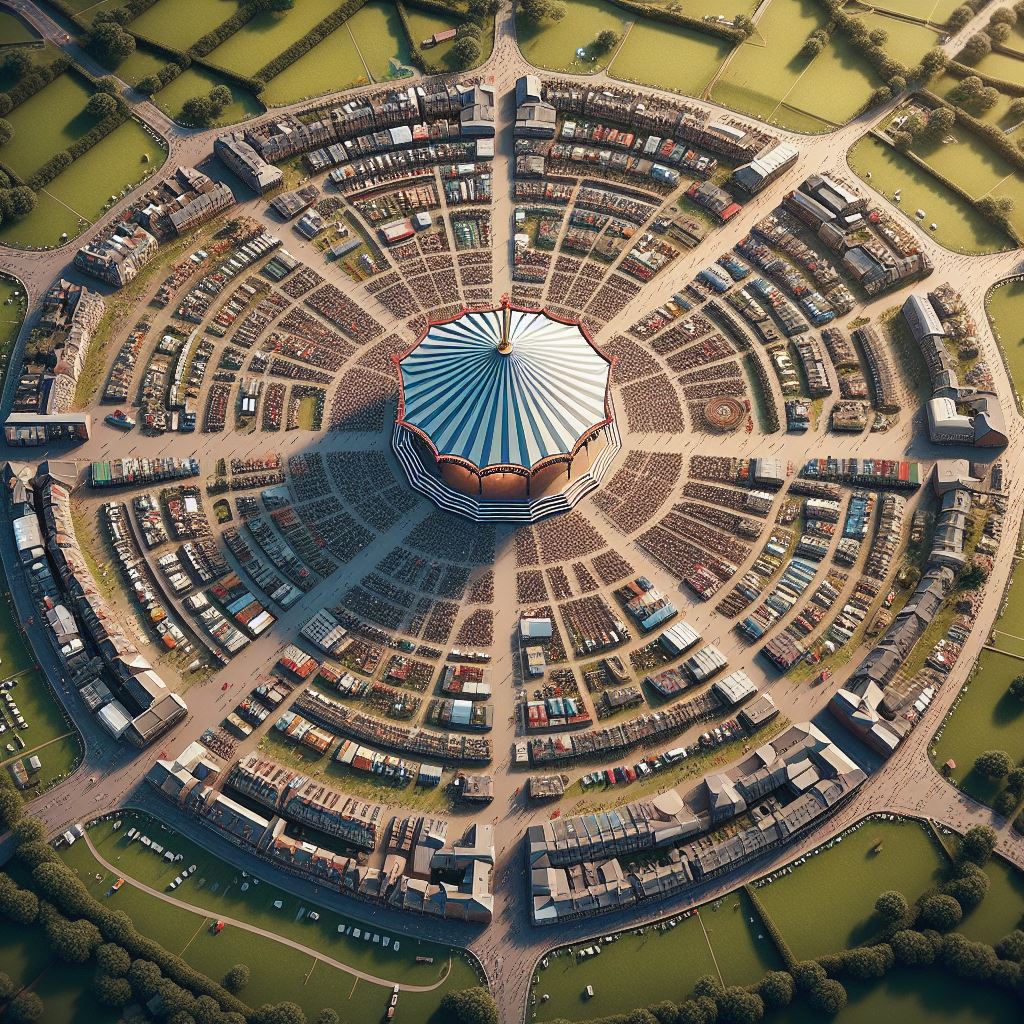
With attendance swelling to over 200,000 people across Worthy Farm’s 900 acres today, it can be challenging to orient oneself amidst the endless rows of tents and stages. However, the Bandstand’s visibility from key thoroughfares helps it function as a giant compass rose. As fan Darren Roach explains:
“When trying to meet back up with mates, you’d always say ‘Meet you at the Bandstand in two hours!’ You can spot it from most points at the festival so it just works.”
The area around the Bandstand also tends to be less densely crammed with tents than other zones of the festivals. This is likely due to its central location at the intersection of major footpaths. Thus the openness around the stage provides crucial pockets of breathing room and visibility for navigating Glastonbury’s hugeness.
Some longtime Glasto attendee theories also suggest the Bandstand represents an air vortex of wind patterns and ley line energies that disperses people in certain directions. While supernatural explanations may vary, there’s no doubt that the Bandstand physically and symbolically anchors the spatial experience.
Key Role Hosting Counterculture Events
A vital but overlooked role of the Bandstand involves hosting talks and events centered around social justice issues, environmentalism, and counterculture movements. For instance, iconic naturalist David Attenborough gave an early climate change speech there in 1992 that influenced many fans.
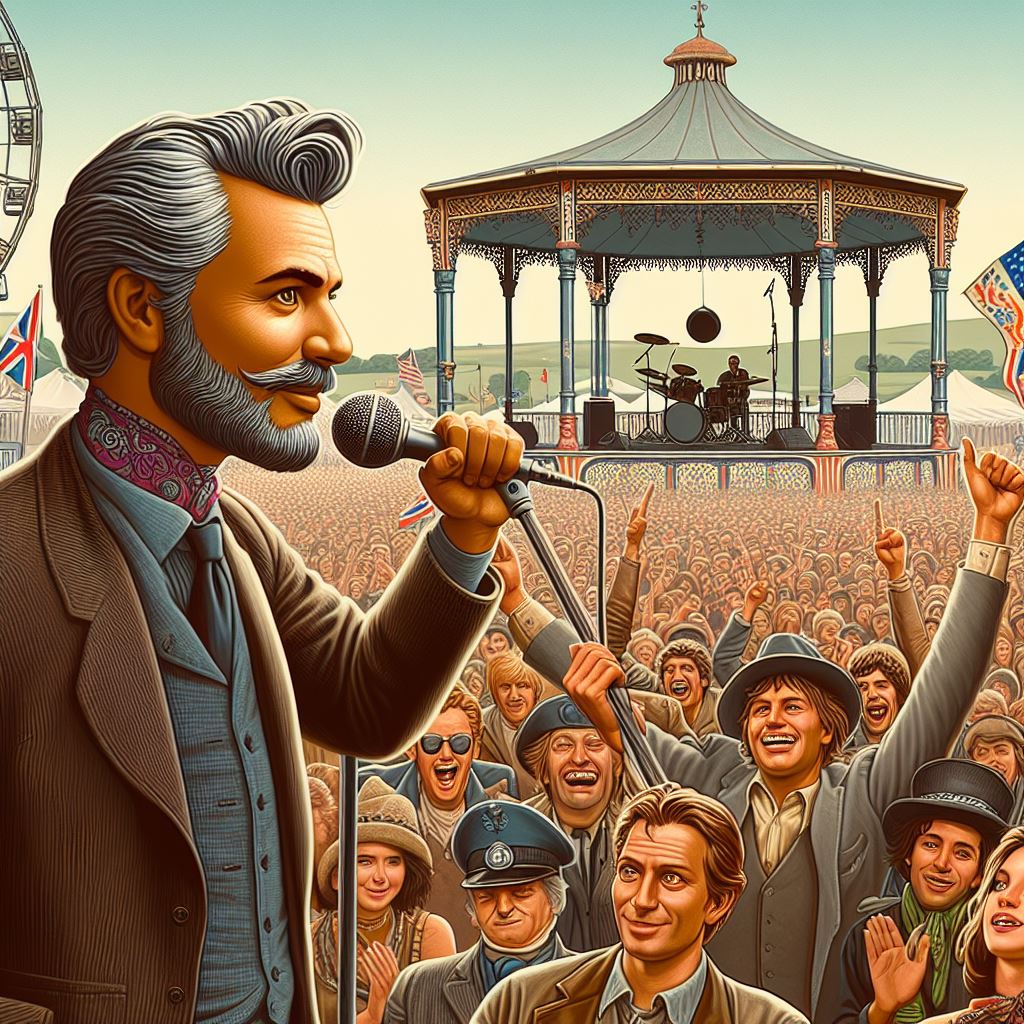
CND supporters also started an enduring tradition of gathering by the Bandstand on the first day of Glastonbury Festivals for a peace convocation going back over three decades now. And Greenpeace frequently tables outreach initiatives at the foot of the Bandstand.
This speaks to a larger legacy of Michael Eavis utilizing Glastonbury’s pulpit to promote progressive social change. The Bandstand specifically seems to draw these sorts of crowds and messaging more than other stages at the event. As Eavis himself notes:
“It’s the perfect informal, communal forum for consciousness-raising about the issues that will define this century.”
So while surprise sets from Radiohead and The Rolling Stones tend to live on most vividly in fans’ memories of this stage, the Bandstand also changes lives by spurring attendees to get involved with organizations like Greenpeace and other worthy societal causes.
Restoration Efforts To Preserve The Bandstand’s Infrastructure
After nearly five straight decades of nonstop performances and partying at Glastonbury Festivals from June to September annually, the Bandstand understandably required infrastructure attention. By 2014, its surfaces had grown weather-beaten with chips, cracks, and scuffs requiring more than just a fresh coat of paint. And its foundational brickwork had weathered erosion plus subtly shifted over time.
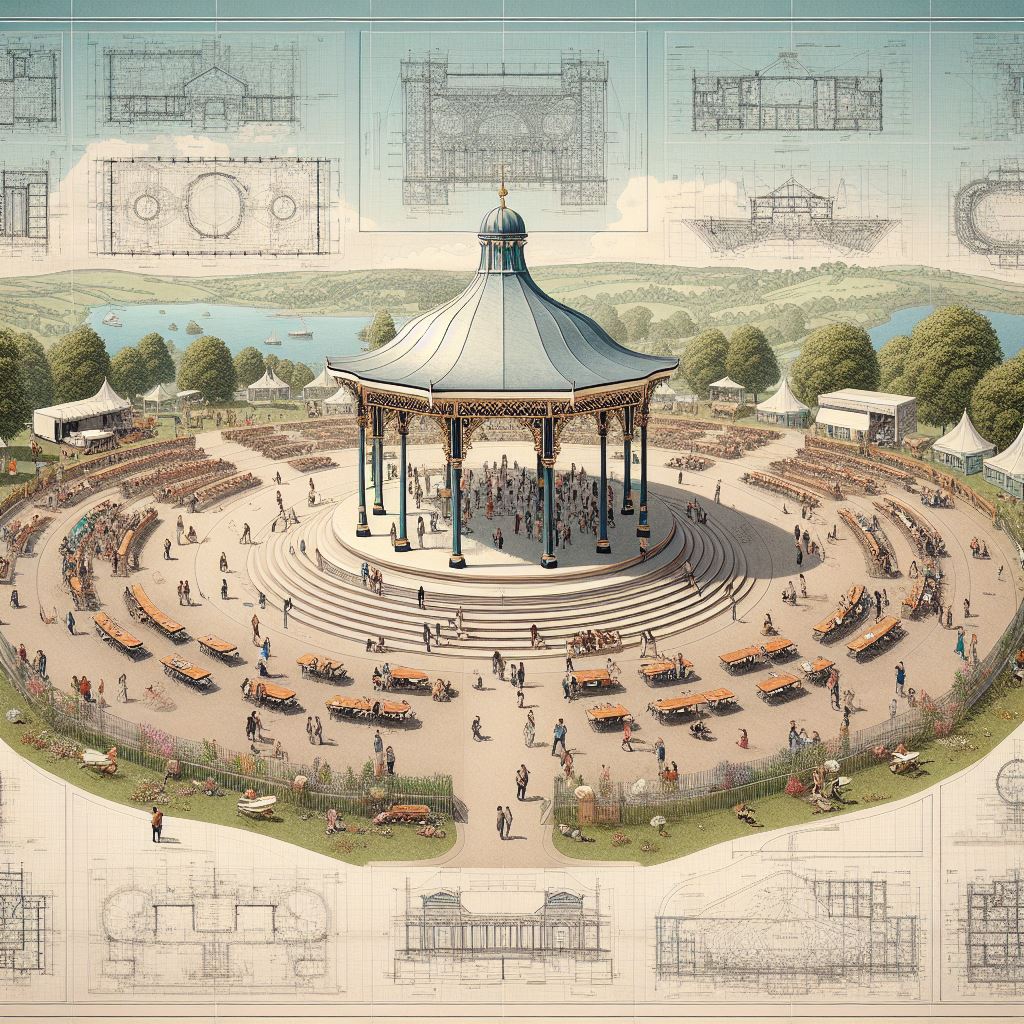
So the Glastonbury Festival team launched a comprehensive restoration campaign in 2019 to strengthen the Bandstand for its 50th anniversary in 2025. This included re-pointing the brick mortar, applying waterproof sealants, reinforcing underground footings and even installing permanent camera tripods. The latter allows professional filming of surprise sets that fans worldwide can enjoy.
Most importantly, workers meticulously preserved and restored original exterior detailing during renovations like the decorative Merlon brickwork along its roofline. Such efforts ensured modern upgrades didn’t sacrifice the structure’s beloved visual aesthetic or charm.
While still structurally sound, these careful restorations were crucial for keeping the Bandstand safe and stable for large crowds while maintaining its distinctive profile. After all, Glastonbury founder Michael Eavis always wants central focal points like the Bandstand preserved to help new generations of fans orient themselves year after year. The iconic stage will likely remain a navigation aid, musical hotspot, and symbol of the festival’s humble roots for decades to come.
The Bandstand in Literature & Pop Culture
Being such a seminal stage site over the decades, the Bandstand pops up as a setting or throwaway reference in books, movies, and songs from time to time.
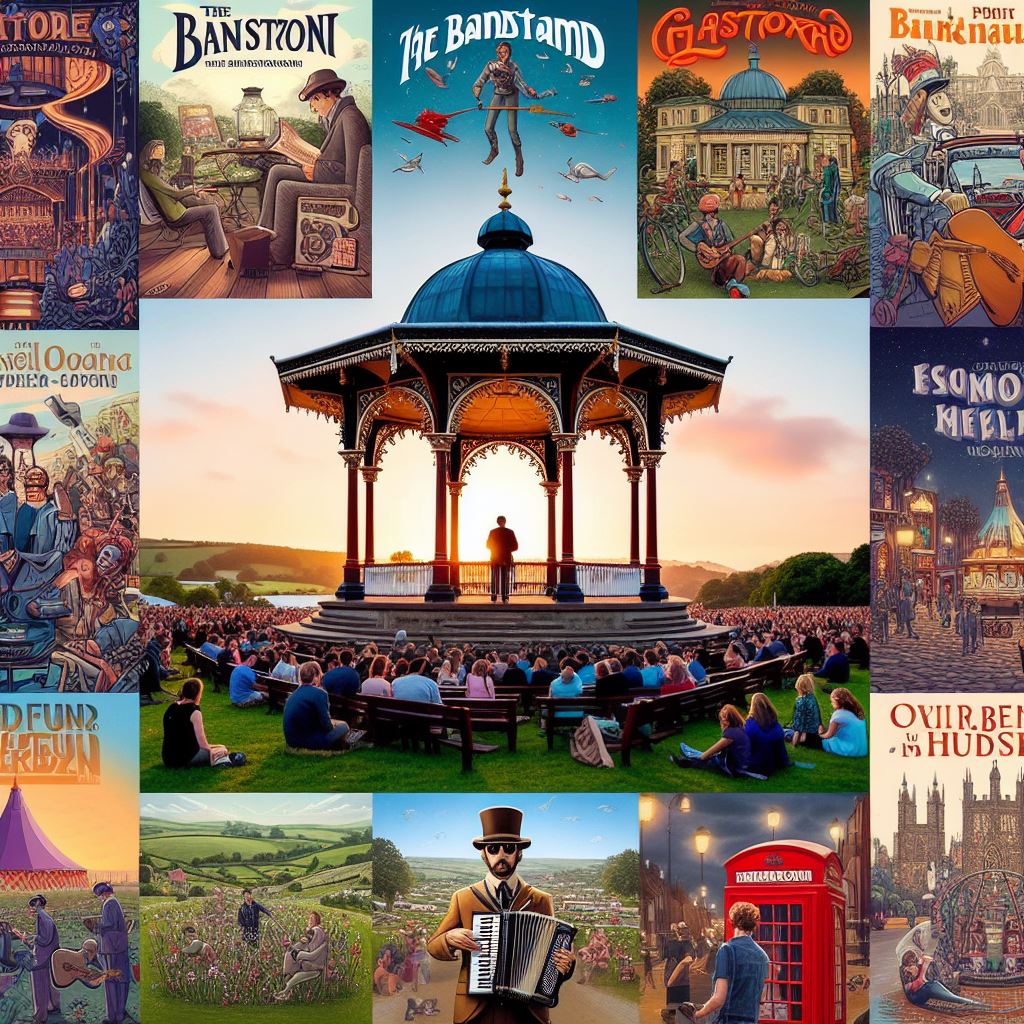
For instance, British indie artist Johnny Flynn’s 2017 song “Wandering Aengus” includes the lyric: “Dance me now to the Bandstand, all night we’ll kick up the sand.” This nods to both the Bandstand’s late-night party reputation and its dustiness amidst Glastonbury Festival’s farm setting!
Acclaimed director Julien Temple also profiled the Bandstand in his 2006 Glastonbury documentary “The Glastonbury Fayre.” He zeroed in on 1971 footage of attendees in bohemian dress dancing euphorically there to Fairport Convention’s set. Images of the willowy Bandstand adorned with colorful flags flicker like a portal to a long-vanished hippie wonderland.
And finally, renowned English novelist Geoff Dyer wrote an entire chapter set at the Bandstand in his late 1990s travelogue “Yoga For People Who Can’t Be Bothered To Do It.” His book used witty real-life vignettes to metaphorically illustrate principles from a yoga primer he’d purchased.
In this Bandstand-focused chapter, the narrator attempts a “Headstand at the Bandstand” which serves as an extended metaphor about seeking deeper meaning while traveling. The “headstand” itself proves abortive in reality, but the Bandstand reference speaks to this stage’s literary pull.
Through cameos in works spanning songs, films, and fiction, the Bandstand demonstrates an influence stretching far beyond just the Glastonbury grounds.
Preserving The Bandstand For Future Generations
After celebrating its 50th year at Glastonbury in 2020, the Bandstand’s future seems vibrant. Michael Eavis himself has spoken extensively about ensuring the structure remains a central part of the festival indefinitely. Its legacy as the stage that birthed surprise performances from Bowie to Pulp lives on as freshly as ever.
In coming years, more and more festival mainstay bands like Coldplay or Florence + The Machine may suddenly materialize at the Bandstand for rare stripped-down sets. And surely many iconic moments yet unimagined will unfold on its weathered stage.
The Bandstand remains a prime spot for quenching surprise and discovery for fans wandering Worthy Farm. For now and decades to come, its permanence seems guaranteed thanks to the stewardship of the Eavis’ themselves. The Bandstand will always function as a compass rose orienting newcomers and veterans alike. More so than any modern art installation or headliner gig on the Pyramid’s elaborate main stage, this humble octagonal structure distills the authentic soul of the Glastonbury Festival.
Here’s to another 50 years of new memories awaiting at Glastonbury’s most storied and magical stage site.
Surprise Sets Live on In the Streaming Era
While the Bandstand may seem deeply rooted in Glastonbury’s analog past, this iconic stage has adapted to the digital era as well over recent years.
In 2013, the festival live-streamed footage of The Rolling Stones’ surprise set for the first time. This set a precedent for filming unexpected Bandstand performances that fans worldwide could experience virtually. The following year, the Pilton Palais Cinema Tent also did a simulcast of Metallica’s secret Bandstand show.
And after infrastructure upgrades during 2019’s renovations, permanent HD camera tripods now flank the stage. These feed professional multi-angle footage to the festival’s live-stream platform. In 2022 alone, breakthrough sets from Billie Eilish, Phoebe Bridgers, and many more Bandstand surprises got broadcast globally because of this built-in capture setup.
While some traditions remain timeless, this new filming apparatus expands the Bandstand’s legacy. Now both in-person attendees and online audiences can share in the delightful spontaneity of whatever icon emerges there next.
Signature Characteristics of Bandstand Performances
As a peculiarly intimate and stripped-down Glastonbury stage, the Bandstand fosters certain trademarks across the surprise sets it hosts annually:
Covers & Rarities – The pressure-free atmosphere often inspires artists to test out acoustic cover versions or long-forgotten old album tracks. Arctic Monkeys delivering Black Sabbath’s “War Pigs” or Radiohead playing “How Can You Be Sure” exemplify this practice.
Guest Stars – With room for a crowd behind the performance area, surprise musicians frequently hop on stage with the main set. Justin Hawkins of The Darkness jamming with Pulp or Bragg joining The Smiths captures the freewheeling potential here.
Encore Jams – Thanks to relaxed curfews compared to the Pyramid, bands often continue vamping and collaborating after their listed set end time. 2011’s impromptu Supergrass/Pulp supergroup that emerged at 3 AM typifies the magic flowing late nights around the Bandstand.
Mashups – Genre lines blur with artists combining songs on the fly, like Radiohead weaving bits of REM’s “The One I Love” throughout a rendition of “Creep.” The communal environment fosters these real-time medleys.
Thanks to its unintimidating back-to-basics setup, the Bandstand has birthed countless moments like these above that push musicians into uncharted territory. Freed from relying on synchronized lighting cues or following a rigid setlist, artists playfully interact with crowds and each other in ways impossible on grand arena stages.
In capturing these distinct types of performances for 50+ years now, the Bandstand offers fans and musicians alike a portal back to the unfiltered collaborative spirit that first sparked many young artists.
Quirky Bandstand Moments Over the Decades
Beyond its musical legacy, the Bandstand and surrounding area play host to many quirky happenings as well:
1974 – A then-unknown 18-year-old Sting grabs Peter Gabriel’s acoustic guitar and starts busking Bandstand singalongs to earn cash for his drive home the next morning.
1982 – New Order’s surprise set gets interrupted when legendary eccentric Julian Cope suddenly materializes naked under a giant tortoise shell on his back and cores apples by the stage.
1990 – Prince plays an impromptu set but insists on being shielded by security blankets from photographers and craning viewer eyes.
1997 – 21-year-old Coldplay singer Chris Martin watches in awe as his heroes Radiohead play the Bandstand steps away. He joins singalongs of “Creep” and vows Coldplay will headline Glastonbury someday.
2019 – England’s Chief Medical Officer Chris Whitty gives an impromptu talk on combating fake health news, uniting science and music fans alike.
2022 – Harry Styles and Olivia Wilde waltz around the Bandstand late one night, catalyzing feverish fan gossip about their relationship status.
With its central location and communal atmosphere, the Bandstand seems likely to draw a delightful spectacle for years ahead.
Preparing For The Bandstand’s 50th Anniversary
Come the year 2025, the Bandstand stage stands to take on even greater importance as its 50th year of incorporation into the Glastonbury Festival. Michael and Emily Eavis have shared glimpses into special events tentatively planned to mark its golden anniversary:

Legacy Artist Tributes – Several iconic Bandstand veterans plan to return for honorary sets recognizing the stage’s influence. David Bowie guitarist Mick Ronson aims to coordinate a Bowie tribute in the absence of the late Starman himself.
Impromptu Collaborations – Emily Eavis teases coordinated surprise collaborations that may even eclipse surprises like Keith Richards & Mick Jagger’s 2013 appearance. “Imagine the magic we can manifest with a blank canvas again!” she hints coyly.
A Half-Century Family Portrait Mosaic – Emily plans a photomosaic collage spanning 1973 to 2023 around the bottom border of the stage itself. This visual history will cement family legacies of attendance for longtime generational fans.
50th Anniversary IPA – A special celebratory craft ale dubbed “The Bandstand Brew” that debuted in 2019 returns in 2025 with a new refreshed recipe and commemorative blue bottle. Proceeds aid stage preservation efforts.
Archival Footage Playbacks – Hazy vintage Super 8 clips from the Bandstand’s earliest days may beam onto backdrop screens at select hours. Ethereal ghosts of Ali Bolton or Quintessence may materialize, resurrected in shimmering monochrome analog.
Through initiatives like these and likely more surprises yet unrevealed, 2025 promises an especially monumental year in the Bandstand’s already rich history. It seems destined to grow as an even more beloved focal point as Glastonbury Festival evolves for its second half-century.
Here’s to whatever unexpected new memories await to be created there!
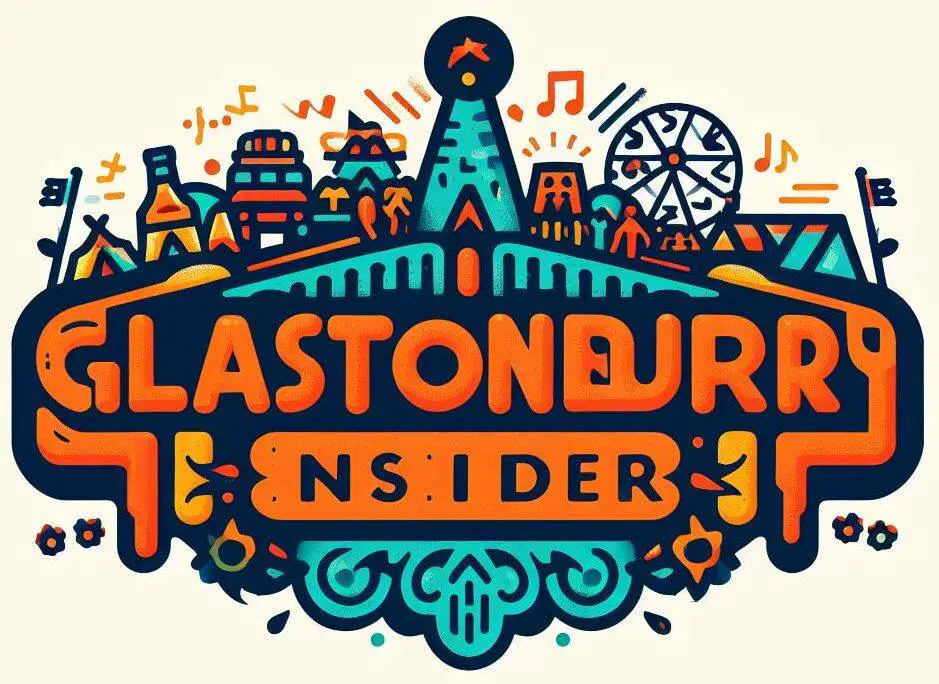
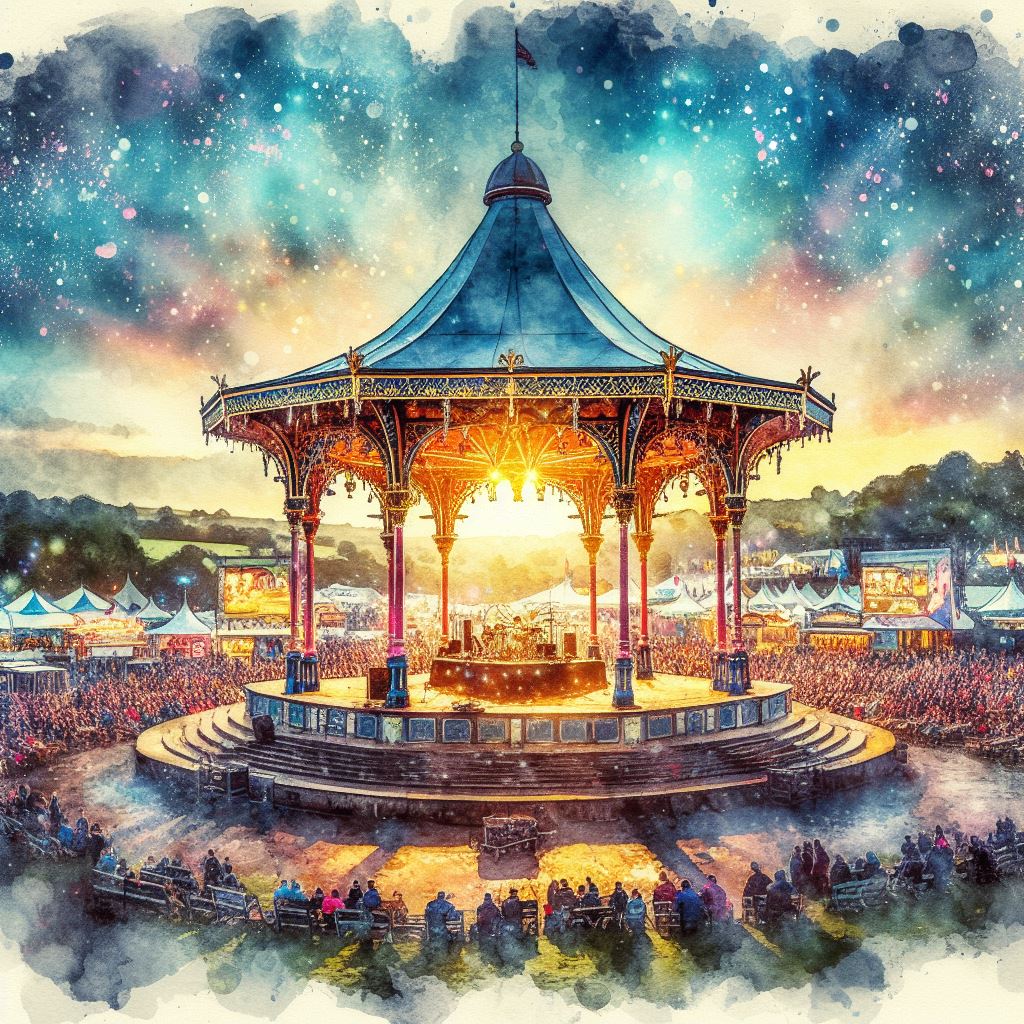

Leave a Reply